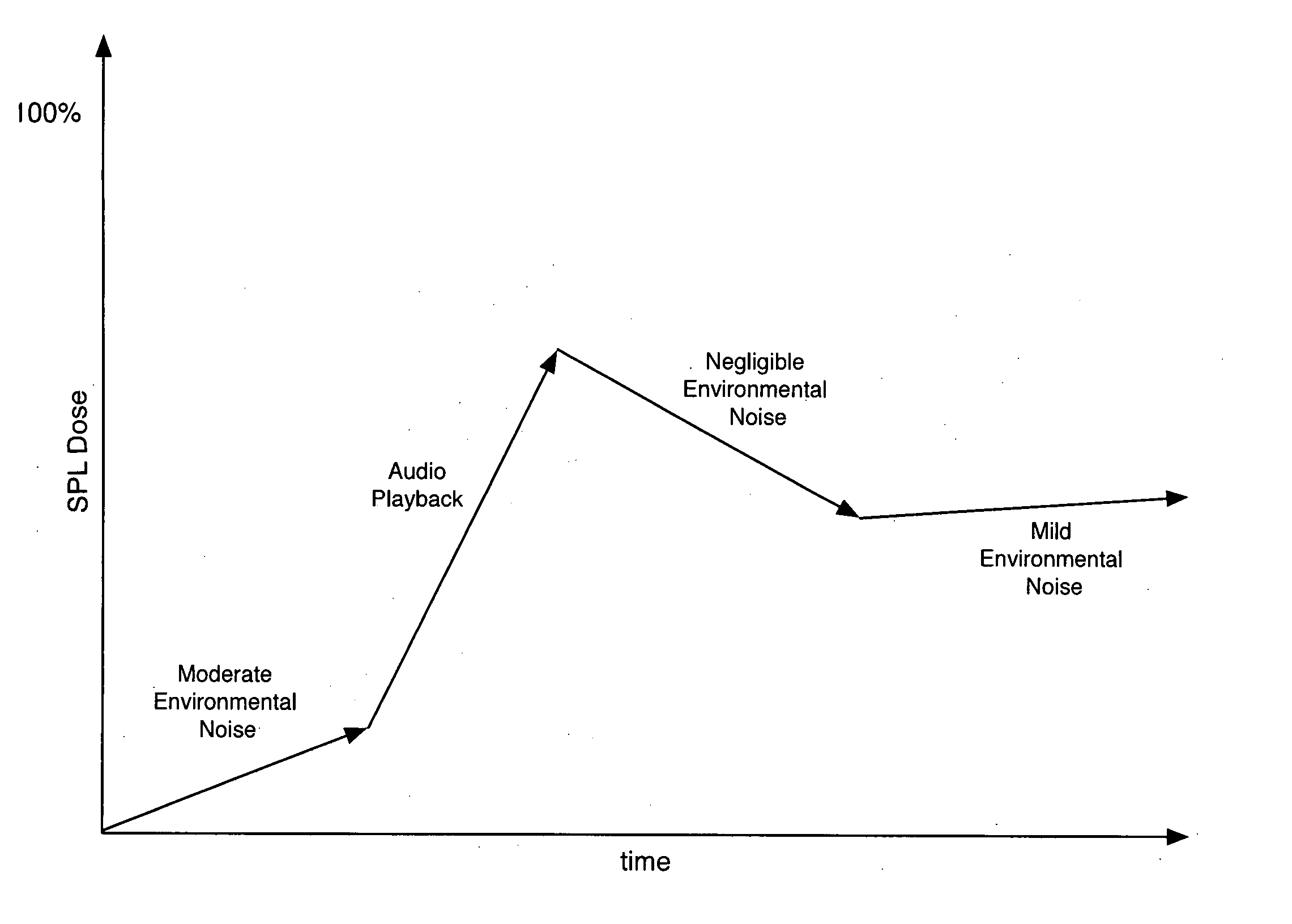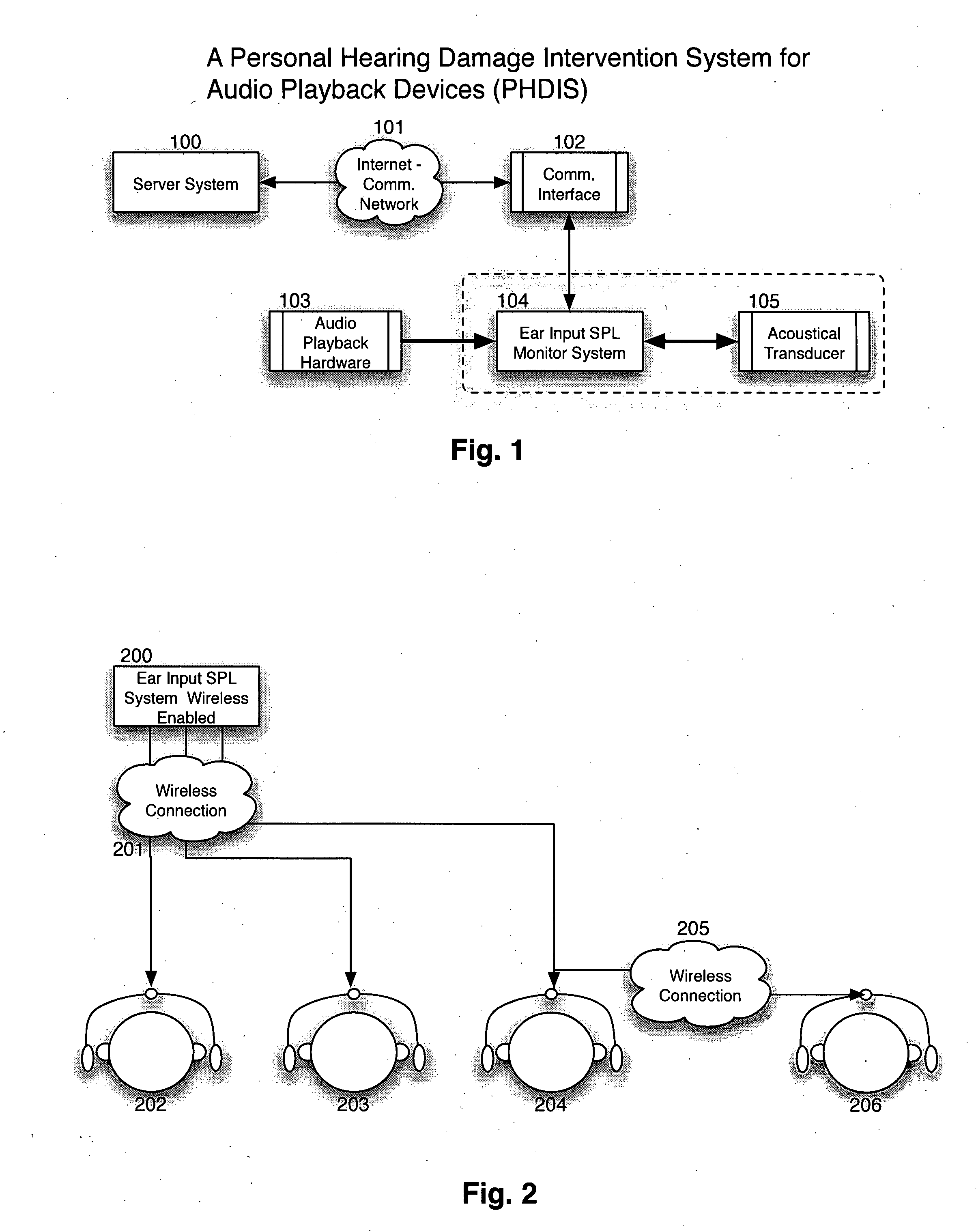Methods and devices for hearing damage notification and intervention
a technology for hearing damage and notification, applied in the direction of distance measurement, instruments, applications, etc., can solve the problems of ear damage, permanent hearing impairment not only increasing in the general population, and the potential for hearing damage, so as to improve the accuracy of spl dose calculations and listening duration recommendations, the effect of reducing hearing damag
- Summary
- Abstract
- Description
- Claims
- Application Information
AI Technical Summary
Benefits of technology
Problems solved by technology
Method used
Image
Examples
exemplary embodiment summary
[0027]At least one exemplary embodiment of the present invention can be applied to almost any Audio Playback scenario, informing the listener about the potential for Hearing Damage inherent to that scenario. Because at least one exemplary embodiment accounts for Environmental Noise, it can be applied to hearing protection devices as well.
[0028]The potential for Hearing Damage associated with a sound stimulus is a function of the sound level, the spectral content, and the duration of that stimulus. Therefore, noise exposure is commonly expressed as the 8-hr time-weighted average (TWA) of the A-weighted (e.g., frequency dependent functions, see ISO standard) sound pressure levels. In industrial workplace settings, it is common to measure exposure to Environmental Noise in terms of a noise dose—the TWA noise exposure for an individual expressed as a percentage of the total allowable daily noise exposure (i.e. 100% noise dose is equal to 85 dBA 8-hr TWA). Exemplary embodiments within pr...
PUM
 Login to View More
Login to View More Abstract
Description
Claims
Application Information
 Login to View More
Login to View More - R&D
- Intellectual Property
- Life Sciences
- Materials
- Tech Scout
- Unparalleled Data Quality
- Higher Quality Content
- 60% Fewer Hallucinations
Browse by: Latest US Patents, China's latest patents, Technical Efficacy Thesaurus, Application Domain, Technology Topic, Popular Technical Reports.
© 2025 PatSnap. All rights reserved.Legal|Privacy policy|Modern Slavery Act Transparency Statement|Sitemap|About US| Contact US: help@patsnap.com



